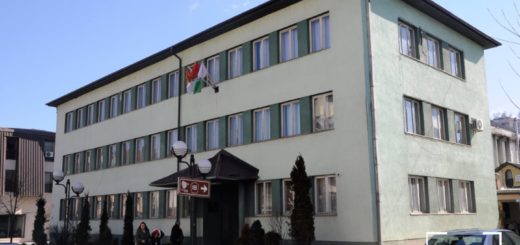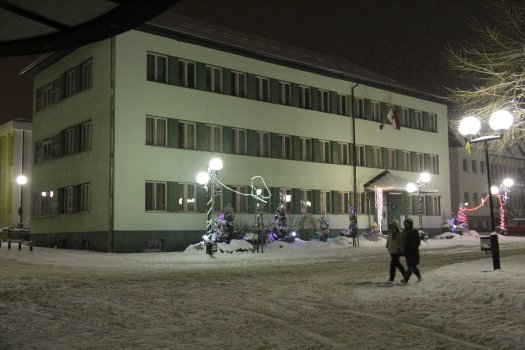PUBLISHED PHOTOMONOGRAPHY OF STARO ROJAJE
The photomonography Staro Rožaja, by two authors Fatih Hadžić and Hajriz Luboder, was published by Avlija from Rožaj.
The authors collected old black and white photographs, which the people of Rožaj kept in their photo albums, yellowed scrapbooks, old frames, or which were thrown away and forgotten in basements and attics, various closets, sideboards, shelves, packages, bags and which until now were not available to the general public. By publishing them in this second, amended and revised edition of the photo monograph, the authors saved these valuable photographs from complete decay and oblivion.
On its 500 pages, the photo monograph contains about 860 selected photos of the old Rozaj bazaar, alleys and mahals, courtyards and gates, sofas, facades, shutters, doors, interiors, old houses and towers. As particularly valuable photos, we mention those famous towers that have already been completely destroyed or do not exist in their original form, that is, that have been left to the ravages of time, namely the Ganić, Kurtagić, Hadžialijagić, Zejnelagić, Kardović, Lubodera, and the Hadžić tower from 1897. year, in the village of Balotići, as the oldest and most striking village stone tower. Then there are photos of alleys, village wooden houses, chardaks, the Upper - Sultan Murat Mosque, the Lower - Kučan Mosque, the Old - Biševska Mosque, cemeteries and niches, pictures of funerals, the turbet of Sheikh Mehmed (Muhamed) Užičanin, numerous panoramas, pictures of the city center, the old market, the bridge over the Ibar, the old men and women of Rožaj, the old, the young, the children...
A significant number of photos from old family photo albums from the period of various armies and wars, pictures of brides and grooms, cultural and artistic societies, from the life and work of the Islamic community, pictures of old craftsmen, Gornji Ibar companies, hotels and motels, as well as famous of Murata Kurtagić and Mustafa Pećanin, as well as numerous other photographs of various subjects.
The editor of this publication is Professor M.Sc. Halil Markišić, who gave Hadžić and Luboder 300 valuable old photographs, mainly of the architecture of old houses, for publication. In addition to Markišić, the photos were donated by a dozen other people from Rožaj, as well as the Polimski Museum of Berane, while part of it was reprinted from the first edition of the photomonography and part is from the family photo archives of the two authors of the book. Reviewers of the photomonography are dr. hfz. Harris ef. Hadžić, and Muhamed ef. Fetić, who also gave a valuable collection of old black and white photos, only a part of which has been published, and the rest of the photos are waiting for a better opportunity to be published.
In his review Dr. hfz. Harris ef. Among other things, Hadžić pointed out:
"The authors of the photo monograph wanted to show that tradition is an important factor in cultural identity, that tradition is a living reality, and that in this way they want to make some traditional values permanent, as a foundation, as a starting point for progress in the future. They were very successful in this, creating an important collection of photographs of architecture, people, environment, and ways of dressing, which will remain as a message and reminder to younger generations. From the monograph itself, one can clearly understand the author's intention and suggestion that, like any other people, the Bosniak, even though it is exposed to the influences of the environment and modernity, and to various assimilation processes, it must preserve its cultural identity and its traditions and remain what it is. .''
Muhammad ef. In his assessment of the photomonography, Fetić points out:
"The authors of this Photomonography, with their perseverance and, above all, their love for their region, made an immeasurable contribution to illuminating and bringing to light a significant amount of precious treasures of Bosniak culture, tradition and customs, which will significantly facilitate future researchers and seekers of cultural and spiritual treasure of Bosniaks in Sandžak and beyond. Chinese sages said that "a picture is worth a thousand words". The image, therefore, represents the superiority of visual representation. This Chinese proverb says that a picture always provokes and is deeply etched in the reader's memory, which is the intention of the author of the book. What is worth noting, in my opinion, is that the authors made a significant effort, spent a lot of time, a significant amount of sabur - patience in collecting and selecting the material for this edition. The authors tried to restore the memories of the customs, culture, tradition and religion of the Bosniak-Muslims from the Rožaj region, nostalgically and wistfully colored by old photographs of faded vakat and zeman, which carried their peculiarities and charms.''
Source: Bošnjaci.Net
[nggallery id=232]





